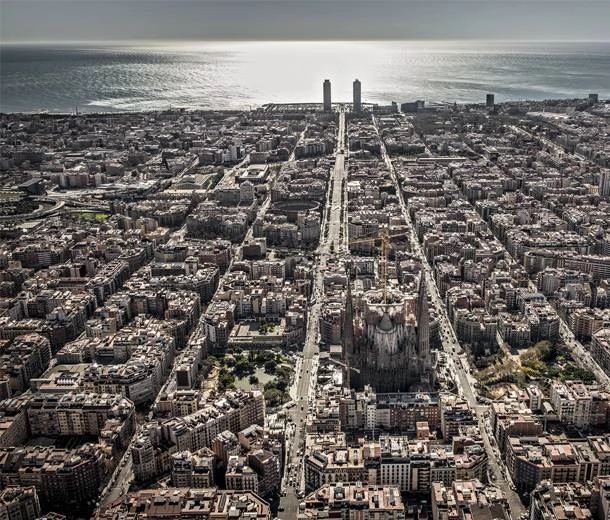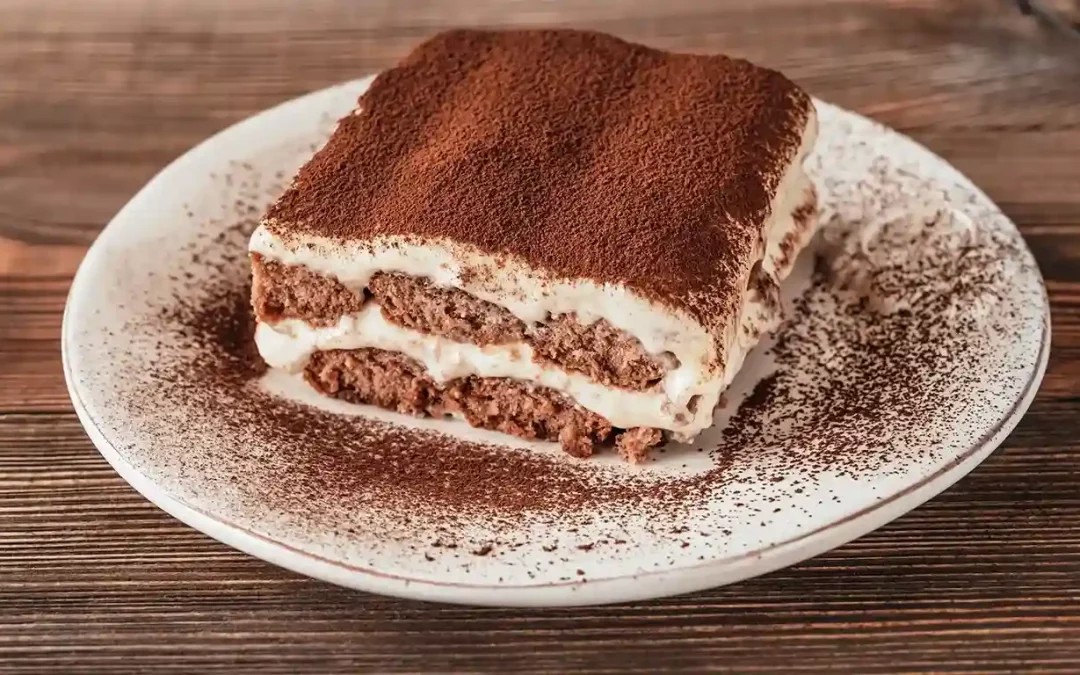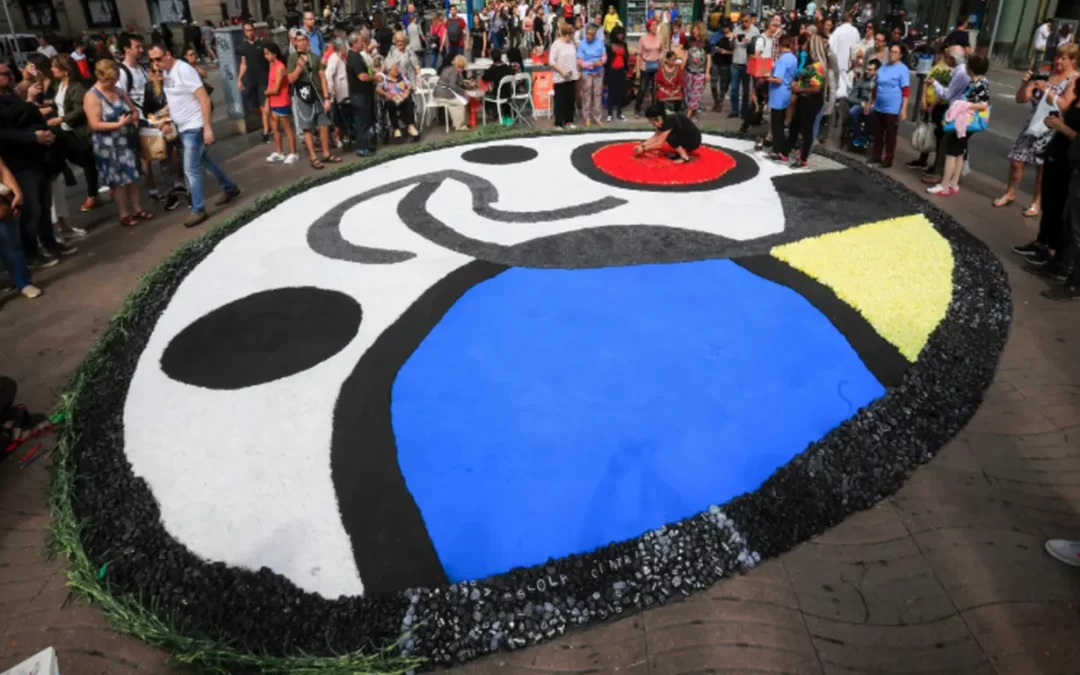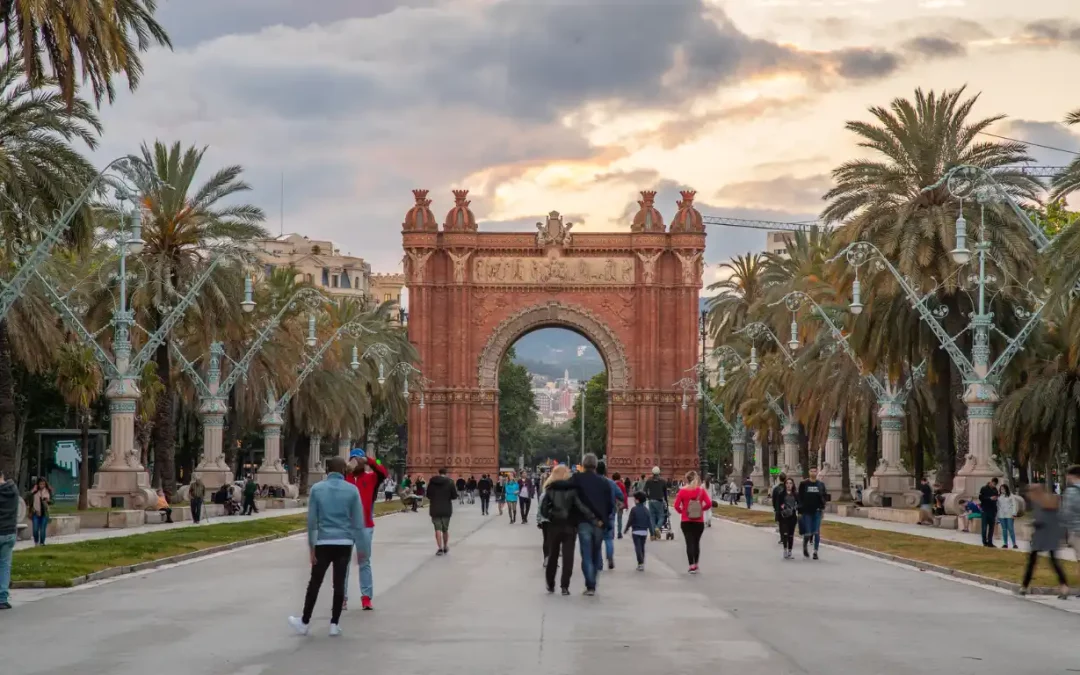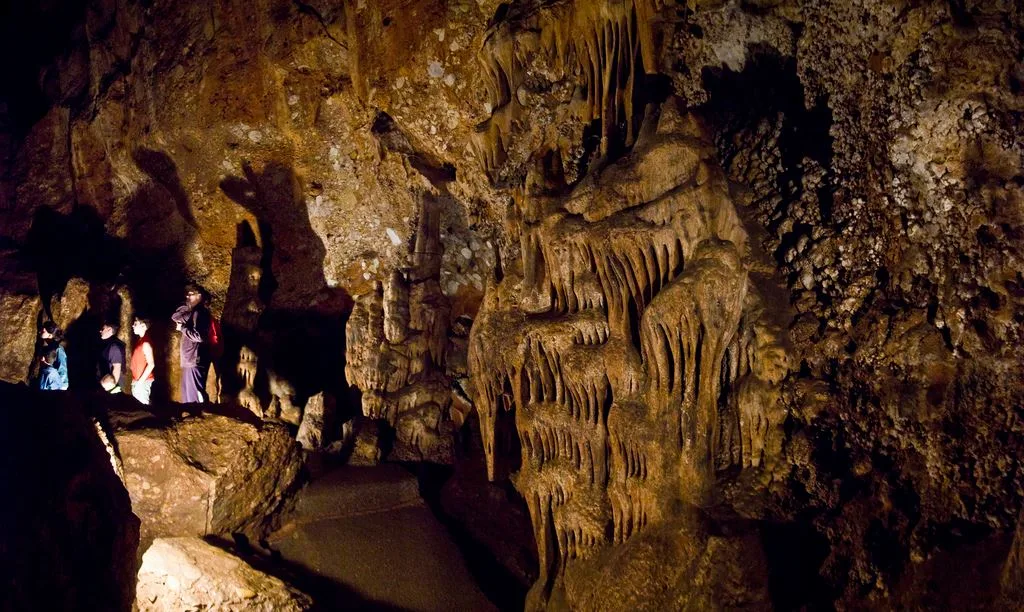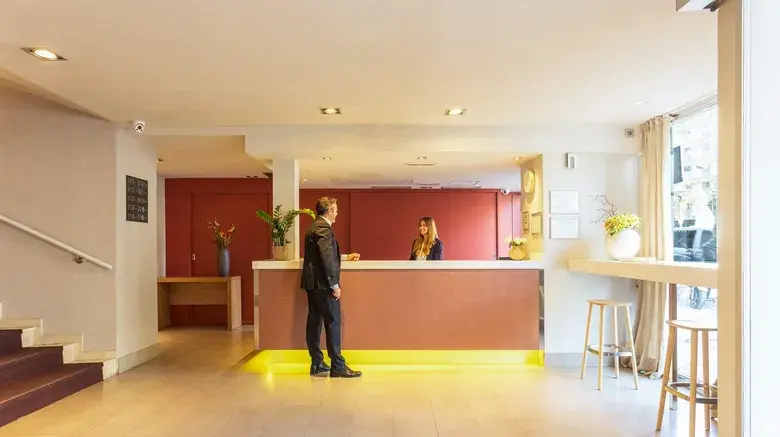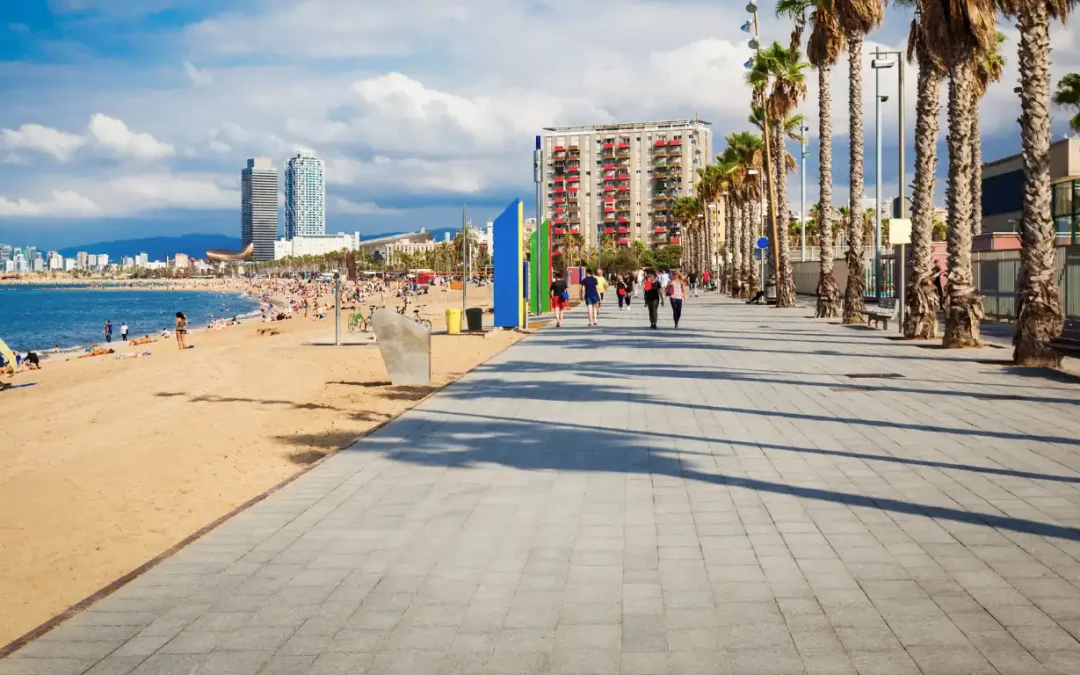In the district of l’Eixample, the largest and most populated in Barcelona, you will find museums, restaurants, shops, markets, emblematic buildings and some of the main icons of modernism in the city. Are you intrigued? Don’t miss our guide with all the information about what to do and what to see in l’Eixample.
The design of Ildefons Cerdà: a strict grid crossed by the Diagonal
The district of L’Eixample owes its name to the development plan designed in the second half of the nineteenth century by the engineer and urban designer Ildefonso Cerdà, who broke with the medieval past of the city by tearing down its walls and which led the Eixample to become the centre of the modernist eclosion in Barcelona.
This was a pioneering project in the evolution of modern urban planning, according to which Cerdà designed l’Example as an almost perfect grid crossed by the Diagonal avenue, with wide streets, a large presence of green spaces and octagonal blocks that incorporated chamfers in the corners to facilitate the circulation of vehicles.
Today the district of l’Eixample is made up of 6 neighbourhoods: la Dreta de l’Eixample, la Antiga Esquerra de l’Eixample, la Nova Esquerra de l’Eixample, el Fort Pienc, la Sagrada Família and Sant Antoni.
Main streets and squares of L’Eixample
Passeig de Gràcia
Passeig de Gràcia is one of the commercial, architectural and business centres of Barcelona. You can find along the street the most glamorous and exclusive shops, combining stores of large international firms with boutiques of Spanish designers such as Roberto Merino or Antoni Miró.
An ode to luxury, fashion and design in the heart of Barcelona that also houses some of the city’s most important modernist buildings such as La Pedrera, Casa Batlló, Casa Lleó y Morera and Casa Ametller.
In addition, Passeig de Gràcia is a fantastic place to eat where you will find everything from fast food to the most select restaurants in the city.
Plaça Catalunya
Considered the heart of Barcelona, the always lively Plaça de Catalunya is a civic, commercial, cultural and leisure hub in which a multitude of activities are organised and which serves as a meeting point for the people of Barcelona.
In this sense, the square (one of the largest in Spain with nearly 30,000 square meters) is surrounded by shopping malls, stores, hotels, banks, bars and restaurants and is the scene of many concerts, exhibitions and other celebrations throughout the year.
Furthermore, Plaça Catalunya is the backbone of some of the city’s main streets: La Rambla Avenue, La Rambla de Catalunya, Passeig de Gràcia, Portal de l’Àngel and Diagonal Avenue.
Diagonal
Honouring its name, this extensive 11-kilometre avenue crosses the whole Barcelona diagonally, from the mountains to the sea, following the urban plan of Cerdá ( so it is not just a street of L’Eixample, but it is a fundamental part of it).
Here you will find everything from shopping centres and restaurants to classic palaces, parks and emblematic buildings like the Casa de les Punxes, one of the best-kept treasures of Catalan modernism.
Another must-see is the Pedralbes Royal Palace and the beautiful and aromatic gardens that surround it.
The final stretch of the avenue is dominated by the Agbar tower (an impressive skyscraper that illuminates Barcelona’s nights with its multicoloured façade) and is home to a multitude of technological companies and avant-garde buildings such as the Diagonal Zero Zero Tower, a 110-metre-high architectural masterpiece that occupies the avenue’s number 0.
Markets you can’t miss in l’Example
Mercat dels Encants
El Mercat dels Encants, also known as “Encants Vells”, is the largest flea market in Barcelona and one of the oldest in Europe. Originally built in the 14th century, in 2013 it moved to an avant-garde building where you can find antiques, clothes, books, electronics and everything you can imagine, both new and second-hand.
Mercat de Sant Antoni
The Mercat de Sant Antoni was opened in 1882 as the first market outside the old city walls. The building exploits to the maximum the geometric possibilities of the Eixample district, with an iron structure built on a cross-shaped floor.
After almost a decade of remodelling work, the market has reopened its doors in 2018 as a space that brings together a traditional market area with another in which you can see the archaeological sites of the ancient wall of Barcelona on which the building was built.
So far our first post on what to do and what to see in l’Eixample. Don’t miss our post on the main buildings and monuments you can visit in this district of Barcelona!


